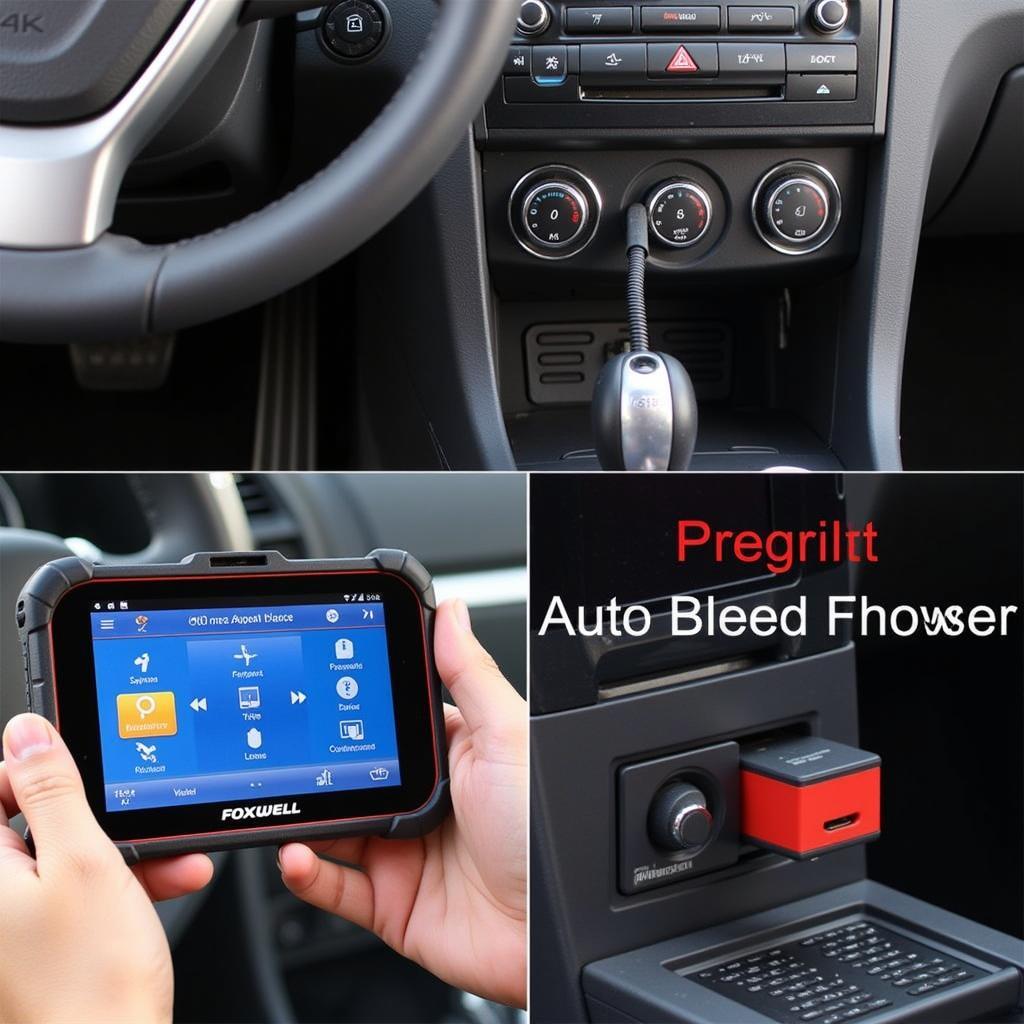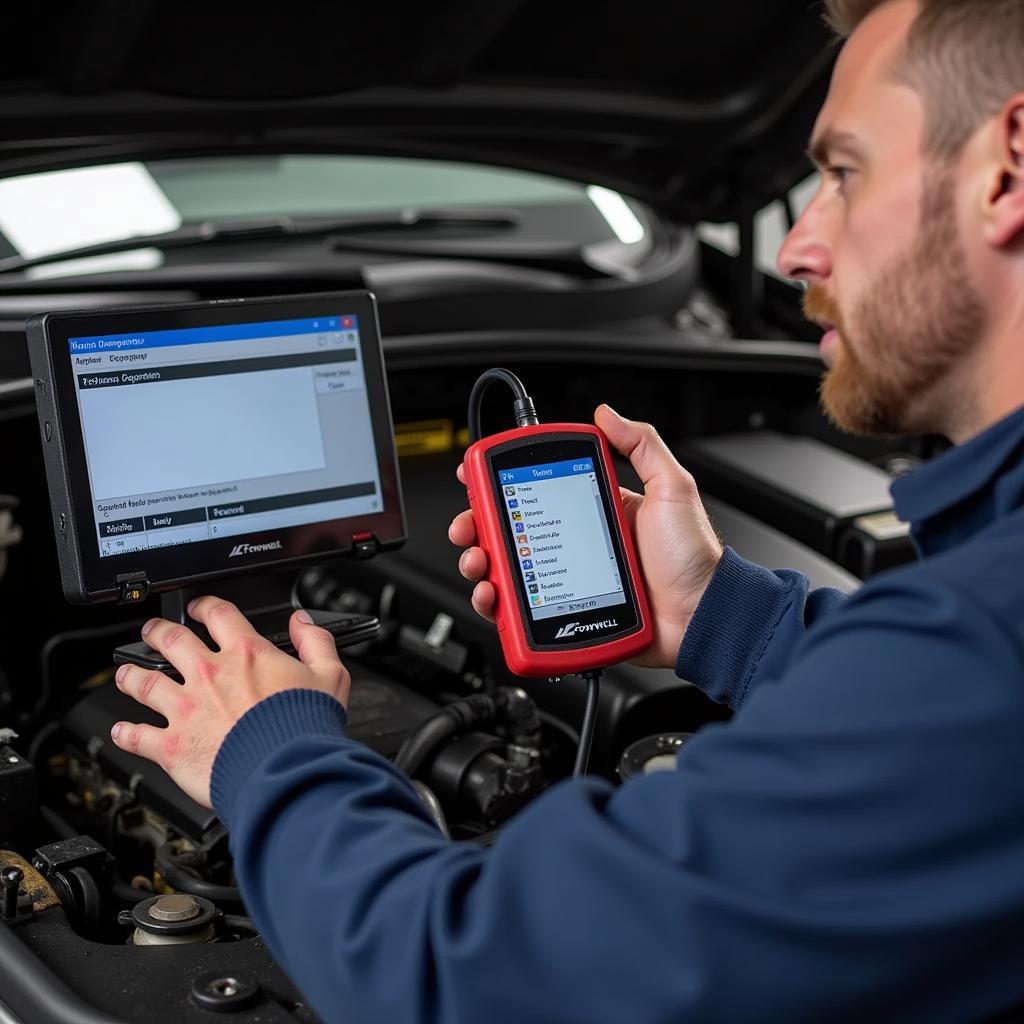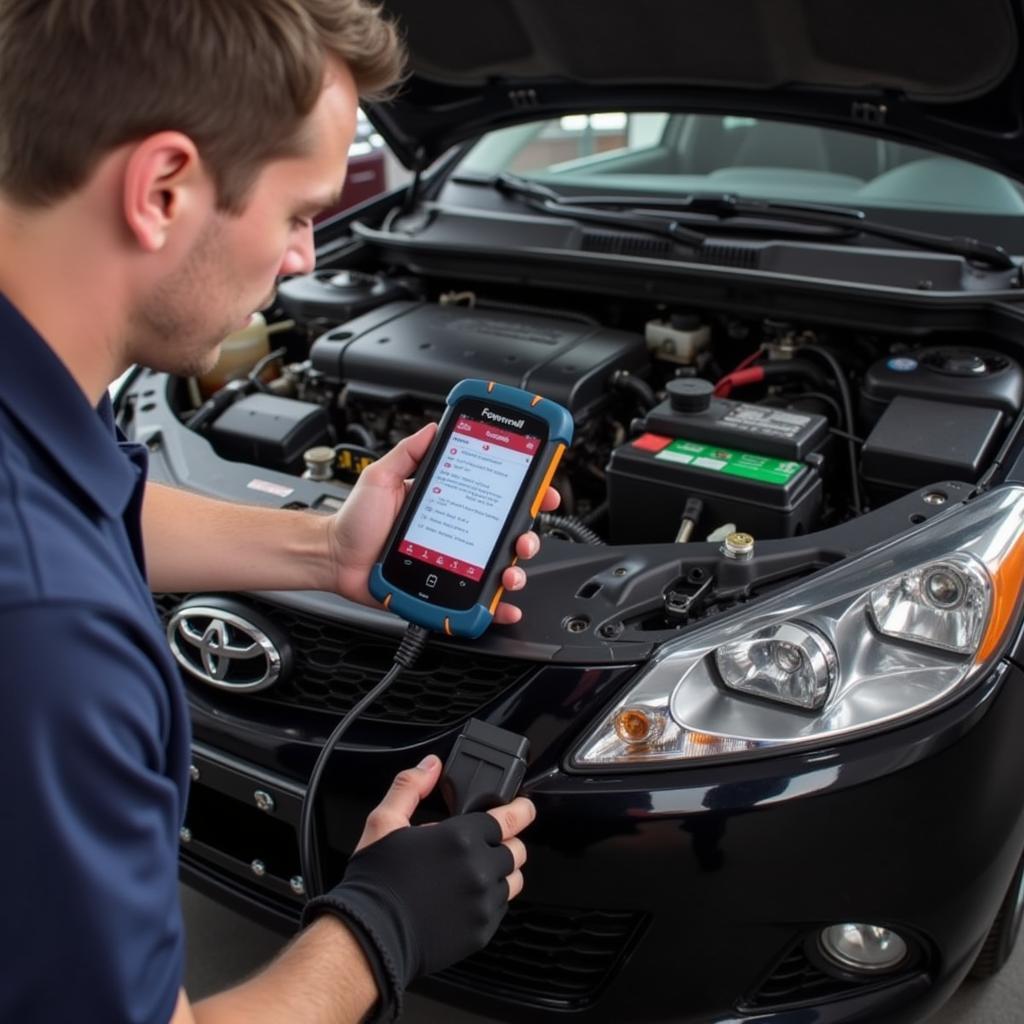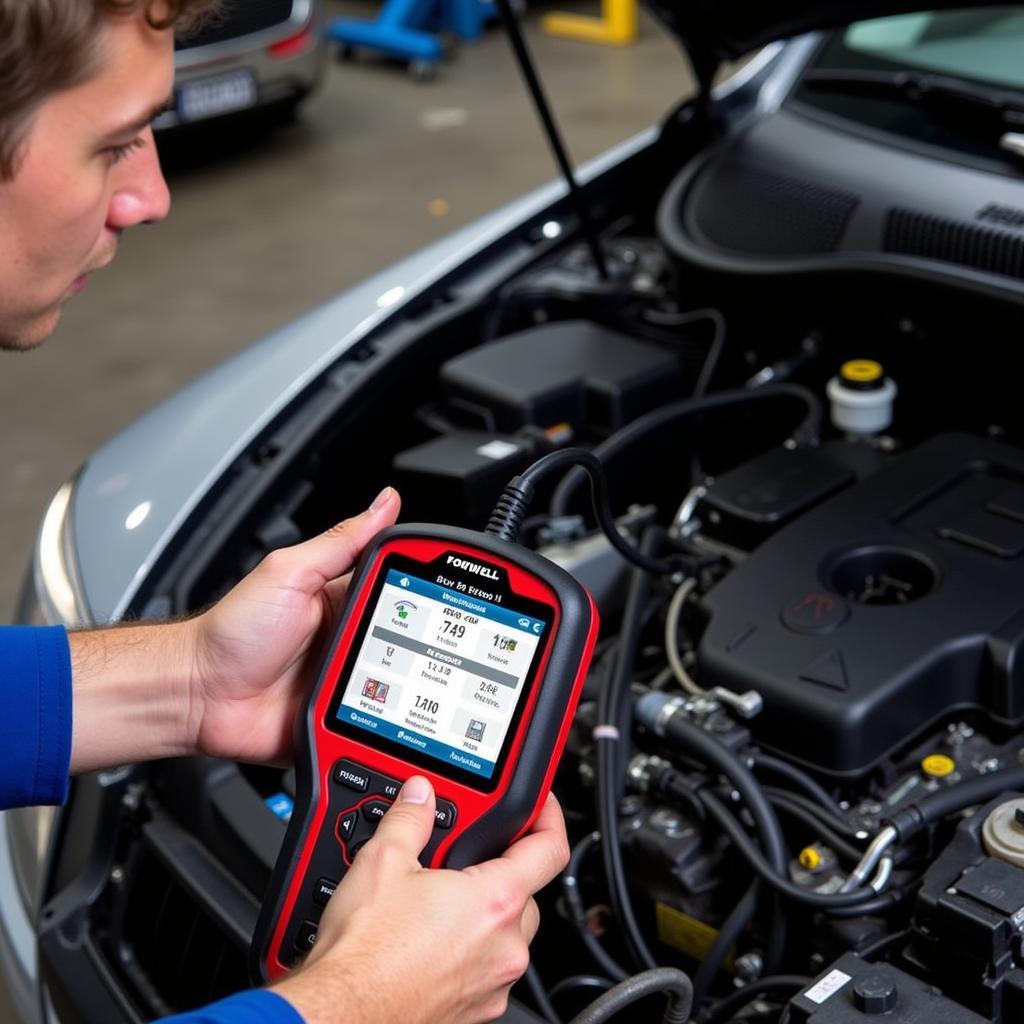Auto bleed procedures, especially for ABS systems, used to be a dreaded task for both DIYers and professional mechanics. Bleeding brakes traditionally involved a messy, time-consuming process, often requiring two people. However, with advancements in automotive technology, tools like Foxwell scanners have revolutionized the way we perform this crucial maintenance task. Auto Bleed Foxwell scanners offer a streamlined, efficient, and often automated approach to brake bleeding.
Similar to a foxwell nt630 automated brake bleeding, these tools offer more than just scanning for codes. They unlock advanced functionalities, including the ability to cycle the ABS pump and control valves, facilitating a complete and effective bleed. This is particularly useful for modern vehicles with complex braking systems, ensuring optimal performance and safety.
Understanding the Importance of Brake Bleeding
Brake fluid, being hygroscopic, absorbs moisture over time. This absorbed moisture lowers the boiling point of the brake fluid, increasing the risk of brake fade under heavy braking conditions. Air in the brake lines can also lead to a spongy brake pedal feel, reduced braking efficiency, and potential brake failure. Regular brake bleeding is essential to maintain a firm pedal, ensure efficient braking, and prevent costly repairs.
Why Choose an Auto Bleed Foxwell Scanner?
Using a Foxwell scanner for auto bleed offers several key advantages over traditional methods. The automation eliminates the need for a second person to pump the brake pedal, simplifying the process significantly. It also reduces the risk of introducing air back into the system. Furthermore, Foxwell’s advanced software allows for precise control over the bleeding process, ensuring all air is purged from the system, especially within the ABS module.
 Foxwell Scanner Auto Bleed Process
Foxwell Scanner Auto Bleed Process
How to Perform an Auto Bleed with a Foxwell Scanner
The specific steps may vary slightly depending on the Foxwell model and vehicle make and model. Always refer to the user manual for your specific scanner and vehicle. However, the general process is as follows:
- Connect the Foxwell scanner to the vehicle’s OBD-II port.
- Turn the ignition on, but do not start the engine.
- Select the “ABS” or “Brake Bleed” function on the scanner.
- Follow the on-screen prompts to select the correct vehicle make and model.
- Choose the “Auto Bleed” option.
- The scanner will then guide you through the process, which typically involves opening and closing bleed valves in a specific sequence.
- The scanner may also instruct you to add brake fluid to the reservoir as needed.
- Once the process is complete, the scanner will notify you.
Remember to consult the foxwell abs auto bleed resource for specific instructions related to your model.
Common Mistakes to Avoid
- Not using the correct brake fluid: Always use the brake fluid recommended by your vehicle manufacturer.
- Not following the correct bleeding sequence: This can result in air remaining in the system.
- Not adding enough brake fluid to the reservoir: This can introduce air back into the system.
- Ignoring warning messages on the scanner: These messages can indicate a problem with the bleeding process.
Just as the foxwell gmc automated bleed process demonstrates, accurate vehicle selection is paramount. Incorrect vehicle selection can lead to inaccurate bleeding procedures and potentially damage the braking system.
Troubleshooting Auto Bleed Issues
If you encounter any issues during the auto bleed process, such as the scanner not communicating with the vehicle or the bleeding process not completing, here are some troubleshooting steps:
- Check the connection between the scanner and the OBD-II port.
- Ensure the ignition is on.
- Verify the correct vehicle make and model is selected.
- Check the brake fluid level.
- Consult the user manual for your specific scanner and vehicle.
Similar experiences are detailed on the foxwell nt630 elite abs auto bleed page, providing valuable insights and solutions.
“A common mistake DIYers make is not selecting the correct vehicle model in the scanner software,” says John Davis, a seasoned automotive technician. “This can lead to incorrect procedures and potentially damage the ABS system. Always double-check the vehicle information before initiating the auto bleed process.”
Benefits of Using Foxwell for Auto Bleed
- Efficiency: Auto bleed significantly reduces the time required for brake bleeding.
- Ease of Use: The automated process simplifies the task, making it accessible even for DIYers.
- Thoroughness: Auto bleed ensures a complete and effective bleed, removing all air from the system.
- Safety: Properly bled brakes are crucial for optimal vehicle safety.
For those seeking a comprehensive solution, a foxwell scanner with auto bleed is an excellent investment. It provides advanced diagnostic capabilities beyond just brake bleeding, offering a versatile tool for various automotive maintenance tasks.
“Foxwell scanners are a valuable asset for any workshop or DIY enthusiast,” states Sarah Miller, an automotive engineer. “The auto bleed function not only simplifies a complex task but also ensures a more precise and effective bleed compared to traditional methods.”
Conclusion
Auto bleed foxwell scanners provide a modern and efficient solution for brake bleeding, making this essential maintenance task easier and more effective. By understanding the process and following the correct procedures, you can ensure optimal braking performance and safety for your vehicle. For further assistance or to purchase a Foxwell scanner, connect with us at ScanToolUS. Our contact details are: Phone: +1 (641) 206-8880 and Office: 1615 S Laramie Ave, Cicero, IL 60804, USA.



